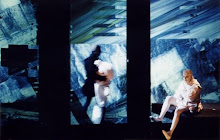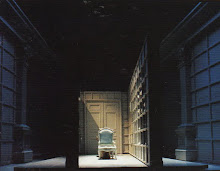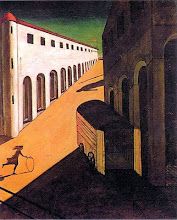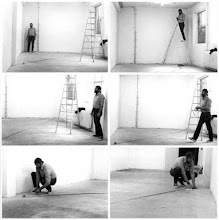It was considered to build the sets as physical models, film them and then edit the footage and add layers in After Effects, using camera tracking; this technique was already used in the development of the film in Part II but it proved to be problematic, in particular when trying to control the camera movement through the physical set. In order to allow more control over the sets and facilitate manoeuvre (i.e. camera movement), they will be build using two-dimensional components to create a 2.5 dimensional space in After Effects, therefore a virtual environment.
This video is a very basic test to try effects of light and duplicated layers in After Effects.
This video is a very basic test to try effects of light and duplicated layers in After Effects.








